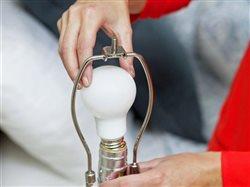Eliminate home-maintenance headaches caused by the harsh weather
(BPT) - The polar vortex of 2014 may seem like a distant memory, but the effects of one of the coldest winters on record may leave long-lasting damage to your home. To make sure your home is in tip-top shape after any brutal weather, consider these key maintenance projects.
1. Inspect the foundation
“Wintertime presents an entire set of threats to a home’s foundation,” says Tom Bury, construction manager on Food Network’s “Restaurant: Impossible.” “The biggest hazard is frost heaving, which occurs when top-level soils freeze and thaw, creating upward suction that draws in more water, which then freezes and thaws even more.” Over time, this frost cycle results in uneven pressure, creating shifts and cracks beneath the home’s foundation.
If you have a basement, it’s crucial to inspect it for leaks that may have developed throughout the winter caused by a shift in the foundation and address any issues before seasonal rain begins. If there are cracks wider than 1/4-inch wide, you can plug them by injecting an epoxy, which will stop water from coming into the space. Just know that foundation repairs can run the gamut from simple DIY fixes to major reconstruction, so it’s best to consult a professional.
2. Freshen up with paint
“Paint is an easy way to transform the look of your home, but it can also be a necessary project after a harsh winter,” adds Bury. From peeling paint on fences or trim, to delivering a complete facelift, painting the exterior of your home has one of the highest returns-on-investment (ROI) of any project, according to Remodeling magazine’s 2014 Cost vs. Value Report. Delivering an ROI of 90 percent, it’s worth every penny, especially when repairs are already required.
“Even if you’re not looking to sell anytime soon, a fresh coat of paint will protect exterior surfaces from future damage and positively impact your home’s curb appeal,” says Bury.
Done right, an exterior paint job can last up to 10 years. Do some research before you start to save yourself from a complete redo not too far down the line. Use high-quality coatings that are specifically designed for the material of your house and your climate. Also, protect surfaces you’re not painting with a high-quality painter’s tape, like FrogTape brand painter’s tape. It’s treated with patented PaintBlock technology, which keeps paint and stain from seeping and ruining your project. Investing the time in this simple prep step will also eliminate the need for time-intensive touch-ups.
3. Doors and windows
Leakage around windows will admit warm summer air and let cooled indoor air escape. “Be sure to check that any caulking and weather stripping has remained intact well in advance of summer,” says Bury. “If you’ve experienced condensation inside the glass on double- or triple-glazed windows during the winter months that could mean the weather seal has been compromised.”
When inspecting doors for leaks, here are the top three problems to be on the lookout for:
* Check doors for cracks that weaken their ability to stop air leaks and water seepage
* Inspect weather stripping for peels and gaps
* Make sure hinges are tight and doors fit securely in their thresholds
If any exterior doors need to be replaced, there are a number of options to choose from, with the top three being steel, fiberglass and wood. In addition to being a necessary repair to keep your home safe and secure, replacing the front door can actually pay for itself. The Cost vs. Value Report shows a new steel front door provides a 96.6 percent ROI. For an extra level of protection, install a guard to the base of exterior doors and windows, like the Duck Brand Double Draft Seal, to help eliminate any air flow. It features an exclusive side-strap that keeps the seal securely in place, keeping cool air in and hot air out.
By taking the time to assess your home’s condition after rough weather you’ll be able to immediately address any issues and ensure your abode is in tip-top shape.







